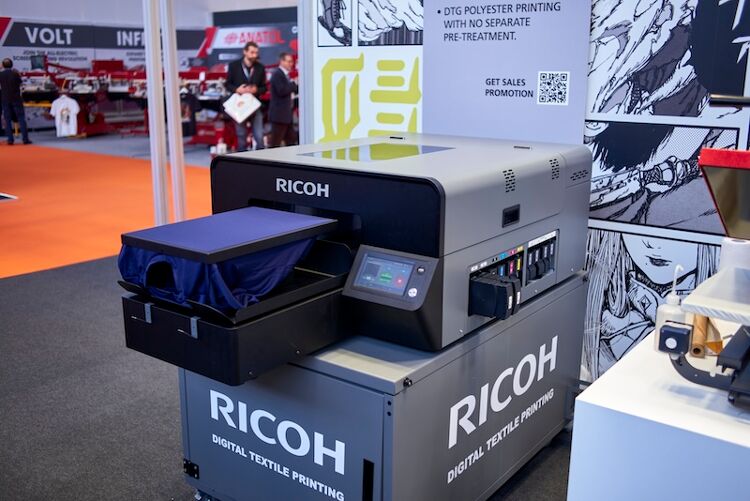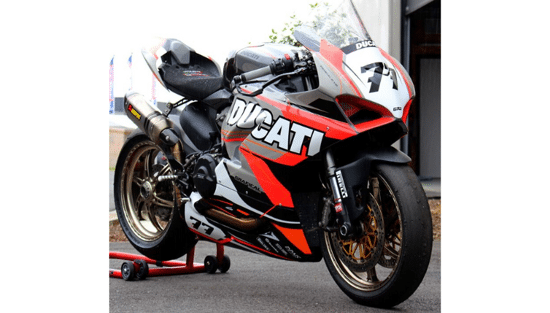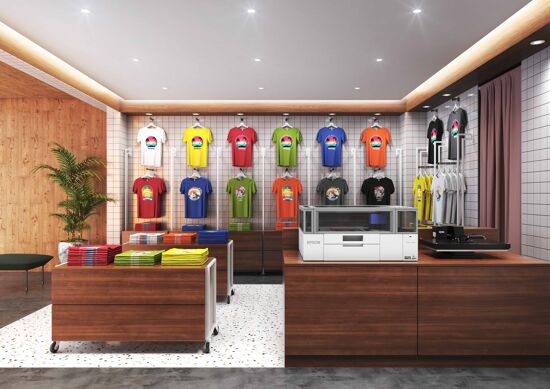The pros and cons of Direct To Film and Direct To Garment printing

Nessan Cleary shares the strengths and weaknesses between direct to film and direct to garment printing. He also discusses the inks that are used for each technique and lists a few examples of printers for each technique.
We’ve seen a huge boom in printing t-shirts, hoodies and other garments in recent years, with large format service providers ideally placed to take advantage of this. Last month we looked at the pros and cons between using screen printing or digital and for this story we’ll look in more detail at the various digital options.
For most people, this will come down to a straight choice between printing direct to garment, or DtG, or instead printing to a film, or DtF, which is then transferred to the final item. Each approach has its strengths and weaknesses so the choice comes down to the one that most closely matches your business model. Either way, the main advantage of digital printing remains its suitability for producing personalised items as well as short run lengths.
As the name implies, Direct to Garment involves printing directly to a garment, such as a t-shirt or hoodie. The operator will have to stretch the garment onto the machine’s platen, ensuring that the area to be printed is in the right place. Most manufacturers offer a range of platens of different sizes and types for holding different items in place, such as t-shirts or hats.
The inks are water-based and work best with natural fibres, such as cotton, linen, bamboo or blends thereof. There’s a good range of blank garments available in all these materials. The process usually requires a pre-treatment liquid to be applied to the area to be printed, and with most of the smaller desktop machines this usually has to be sprayed on manually. After printing, the item will have to be placed immediately into a heat press for a few minutes to fully cure the ink.
DtG printers use a CMYK inkset and most vendors will offer white ink as an option or a separate five-colour model for the smaller models. However, you will need the white ink in order to print to darker garments, to help the colours stand out from the material. However, the white ink adds to the time taken for printing so most manufacturers will quote productivity for both light and dark garments. Otherwise the productivity is determined by how many garments the operator can load and unload per hour.
There’s a good range of DtG printers from several manufacturers, too many to list here, but with a choice of size and productivity and, of course, cost. There’s a good argument for starting with a desktop machine to build volume and then either adding a second machine or switching to a bigger printer. The larger models will offer dual platens so that one can be loaded or unloaded while the other is printing to increase productivity. Another option is simply to buy a spare platen - most are designed to be changed quickly - so that the loading can be done offline.
Polyester
A great deal of sportswear is made with polyester or a blend that is substantially based on polyester, and this has proven to be a weak area for direct printing. The problem lies in getting the ink to adhere to the fibres, which are thinner and more slippery than with natural materials. Consequently most printshops have had to rely on dye sublimation to print sportswear or other polyester-based clothing. But a couple of solutions have appeared recently that will cope with polyester.
Kornit showed off the Atlas Max Poly last year, which is an industrial-scale DtG printer specifically designed for polyester printing. It’s based around Kornit’s existing Atlas Max but has a different inkset called Olympia. This is combined with Neutrafix Pro fixation, and Poly Enhancer with Q.fix after the printing.
 This Mimaki TxF150 was the company’s first DtF printer, seen here at last year’s Fespa show.©Nessan Cleary
This Mimaki TxF150 was the company’s first DtF printer, seen here at last year’s Fespa show.©Nessan Cleary
Ricoh has also developed its own DtG polyester printer, the RI4000, which will make its European debut at this year’s Fespa show, having been previewed as a prototype at last year’s Fespa. Essentially Ricoh has adapted its existing Ri2000 DtG printer which already uses two separate print stations to speed up the productivity. The RI4000 uses the first of these print stations to lay down an optimiser, followed by white ink and then the second one applies colours. Most of the ink sits on the surface but some is absorbed into the material.
Direct to Film
Recent years have seen a new approach, printing direct to film, that has become extremely popular, driven largely by low cost machines from China. The main advantage of DtF is that it will work with a wide range of different materials, including polyester, cotton and nylon. In addition, it’s a relatively cheap process, with reasonable productivity since there’s no need to apply a primer to place the garment in the printer.
The process starts with a rollfed inkjet printer, typically around 60cm wide, which prints the design onto a transfer film using water-based inks. The film is then fed from the printer into a second machine variously referred to as a powder shaker, powder curing unit or an applicator. This device spreads a hot melt adhesive powder onto the design and shakes it to ensure that you have the right amount of powder spread evenly across the design. The powder is heated to melt it onto the film, and then cured so that the film complete with the transfer print can be wound onto a roll.
This leads to much higher productivity than with DtG from a relatively basic set up, which is one reason why so many service providers favour it. The final stage is to place the blank fabric together with the transfer in a heat press. The plastic base can be peeled and is usually recyclable so there’s no sustainability issue. This can be done straight after printing, or at a later date, or you can simply post the transfer print to a customer or another supplier to apply it to the final object.
The DtF process is quite versatile and can be used on many different items, from t-shirts to umbrellas. It’s particularly suited for smaller graphics and logos, and can produce more vibrant colours than DtG.
That said, the DtF ink sits on top of the material whereas the DtG process leads to the ink penetrating into the fabric, which can achieve a much more natural feel. This in turn can translate into charging a higher price per item.
Ultimately the choice comes down to the overall business model, the productivity and margins per item. The main factor is going to be where the volume of sales is coming from, so that an effective e-commerce sales platform is essential. However, in terms of the printing, a common sense approach for many service providers might simply be to use both methods and chose according to application.
Discover the latest innovations in direct to film and direct to garment printing at FESPA Global Print Expo 2024, Europe’s leading print and signage exhibition. Taking place from 19th – 22nd March 2024 at RAI Amsterdam, Netherlands. Register here and use code FESJ404.
Topics
Interested in joining our community?
Enquire today about joining your local FESPA Association or FESPA Direct
Recent news

The importance of Personalisation in Direct Mail - The Power of Print
Jeroen van Druenen, CCO of Jubels discusses how personalised direct mail, especially print, boosts engagement and ROI by tailoring content to individual recipients. Using variable data printing (VDP), marketers create unique designs and offers, enhancing relevance and fostering stronger customer relationships. Physical mail's tangibility and lasting impact further amplify personalisation's effectiveness.

What are the current trends for digital screens?
Digital screens are evolving rapidly, moving beyond simple signage. MicroLED technology improves resolution and efficiency, while 3D and AR displays offer immersive experiences. AI is transforming content creation and analytics, personalising interactions and optimising screen placement. Larger, wall-sized screens and temporary rentals at events are becoming more common. As screens become ubiquitous, innovation focuses on eye-catching solutions to maintain audience engagement.

Hints and tips for vehicle wrapping success
While rising demand for vehicle wrapping is good news for the industry, this is placing more pressure on companies to deliver quality work at a solid pace. Here, Rob Fletcher picks up some tips from several experts in this sector to help wrappers operate smoothly.

What are the opportunities in Personalisation for Sportwear and Signage?
Rob Fletcher discusses the growing importance of personalisation and digital innovation across sectors. Major brands use personalised print to engage customers and boost sales. Personalised sportswear demand is increasing, and companies like Eurojersey embrace sustainable manufacturing and digital transformation.